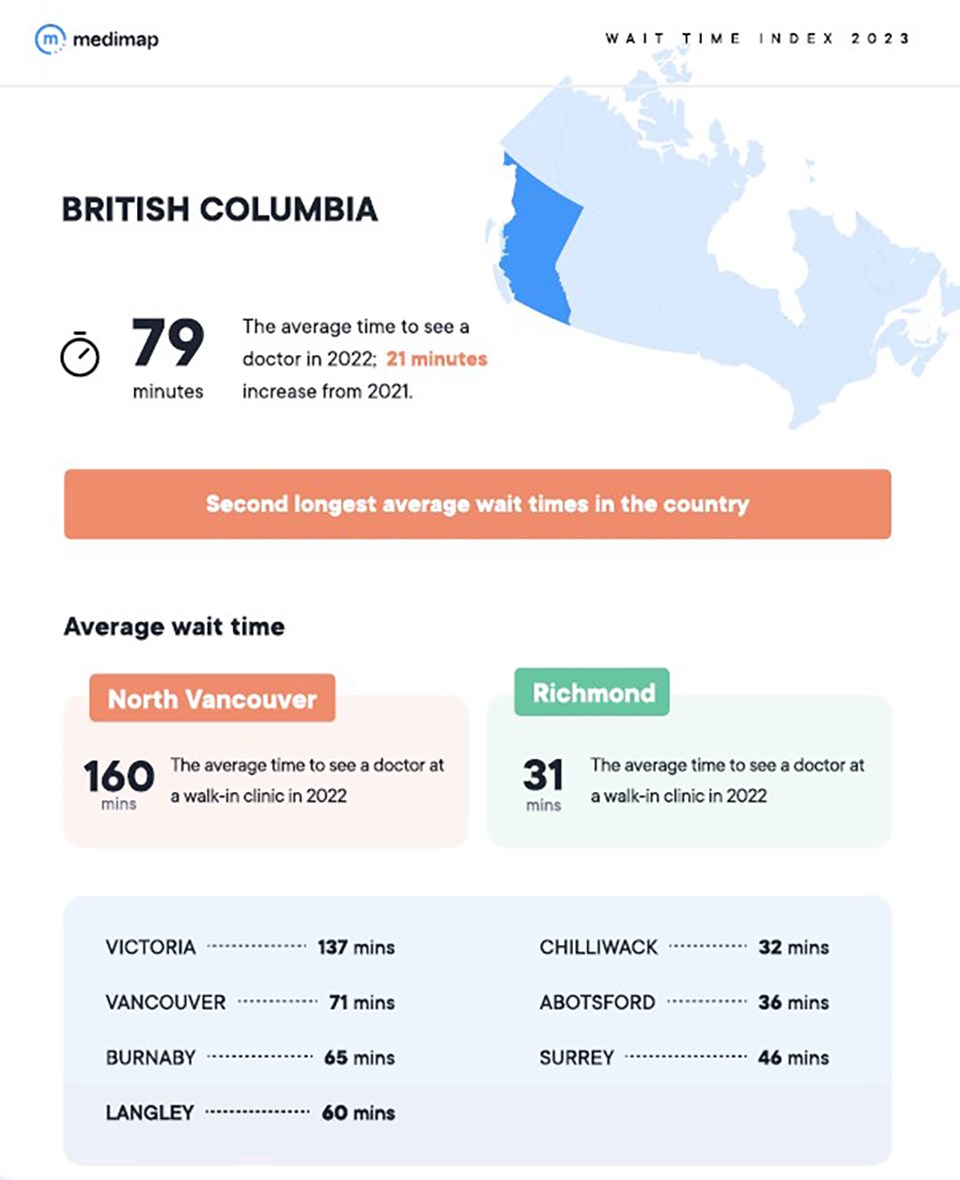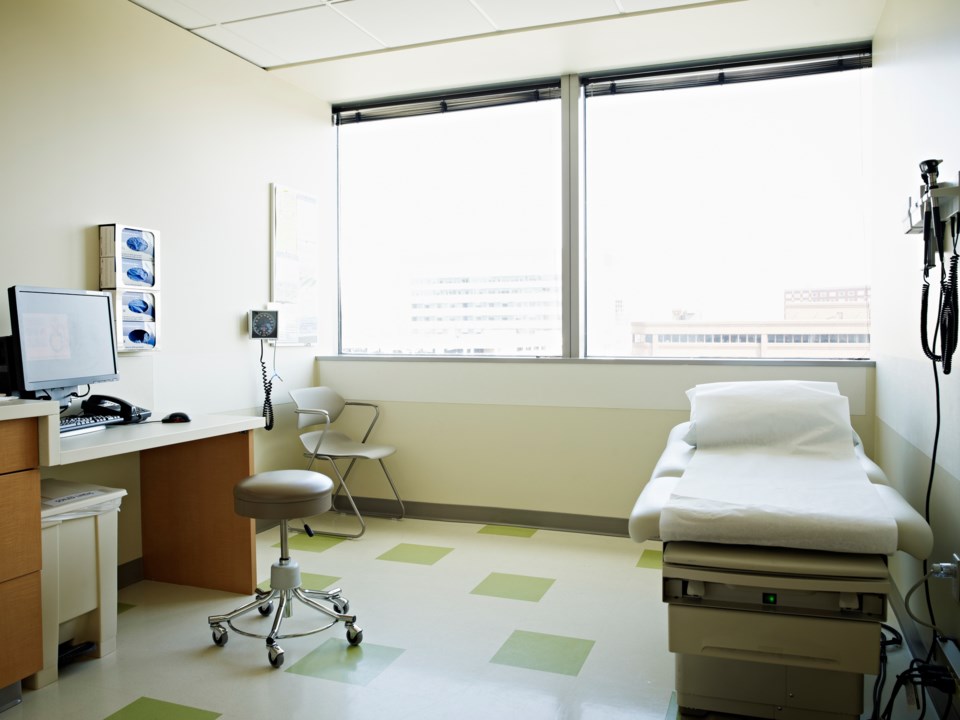Patients wanting to see a doctor at Burnaby walk-in clinics last year saw some of the longest wait times in the province, new data shows.
According to Medimap's 2023 index, Burnaby was the fourth-highest average wait time in B.C. at 65 minutes behind Vancouver (71 minutes), Victoria (137 minutes) and North Vancouver (160 minutes).
Provincially, B.C. recorded an average wait time of 79 minutes — the second-highest in Canada — up from 58 minutes in 2021 and 41 minutes in 2019.
Richmond, Chilliwack, Abbotsford and Surrey were among the cities with the shortest wait times in the province.

The wait-time average across the country last year was 37 minutes, a 12-minute increase from 25 in 2021.
The shortest wait times were in Ontario (25 minutes) and Manitoba (31 minutes).
Six of the top 10 cities with the shortest wait times in 2022 were in Ontario, with Brampton recording the shortest average wait time at 10 minutes.
The Medimap Walk-in Clinic Wait Time Index, released Monday (Feb. 6), uses data collected from walk-in clinics across Canada, about 70 per cent of which use the company’s software to show wait times online for patients.
"The drastic increase in average wait times at walk-in clinics provides further evidence that healthcare systems across the country are struggling to provide adequate care," Medimap CEO Thomas Jankowski said in a release.
"While there is no single solution to fix this problem, our mission at Medimap is to work with healthcare providers, including walk-in clinics, pharmacies, hospitals and allied health-care professionals to help Canadians find the care they need when they need it."
How is B.C. addressing the doctor shortage?
In an effort to address the doctors shortage in the province, the government recently introduced a new payment model.
The Longitudinal Family Physician Payment Model (LFP), which came into effect on Feb. 1, partially replaces the fee-for-service model. So whereas doctors once could only bill the government on a per-visit basis, the LFP allows them to bill for matters such as time spent with a patient, diagnostic assistance and research into a patient’s health matter.
The new model also reduces administrative work for doctors, according to Dix, who was joined in support by Dr. Joshua Greggain, president of Doctors of BC, the province’s chief professional association for physicians.
Despite questions as to whether that level of enrolment is enough on the first day, considering the BC College of Physicians and Surgeons reports 7,229 family practitioners, Dix expressed satisfaction that more doctors will come on board.
"The exact number isn’t important but the direction is," said Dix, adding that he will update the uptake numbers over the course of the next year.
Greggain said the model will remain a "work in progress" as some billing matters are still not streamlined with the system.
"It's going to increase family doctors in B.C.," said Dix, adding, "This is a model that will attract people to family practice."
Dix announced the new model last October, as Doctors of BC expressed support.
- with files from Cindy E. Harnett, Times Colonist, and Graeme Wood, Glacier Media

